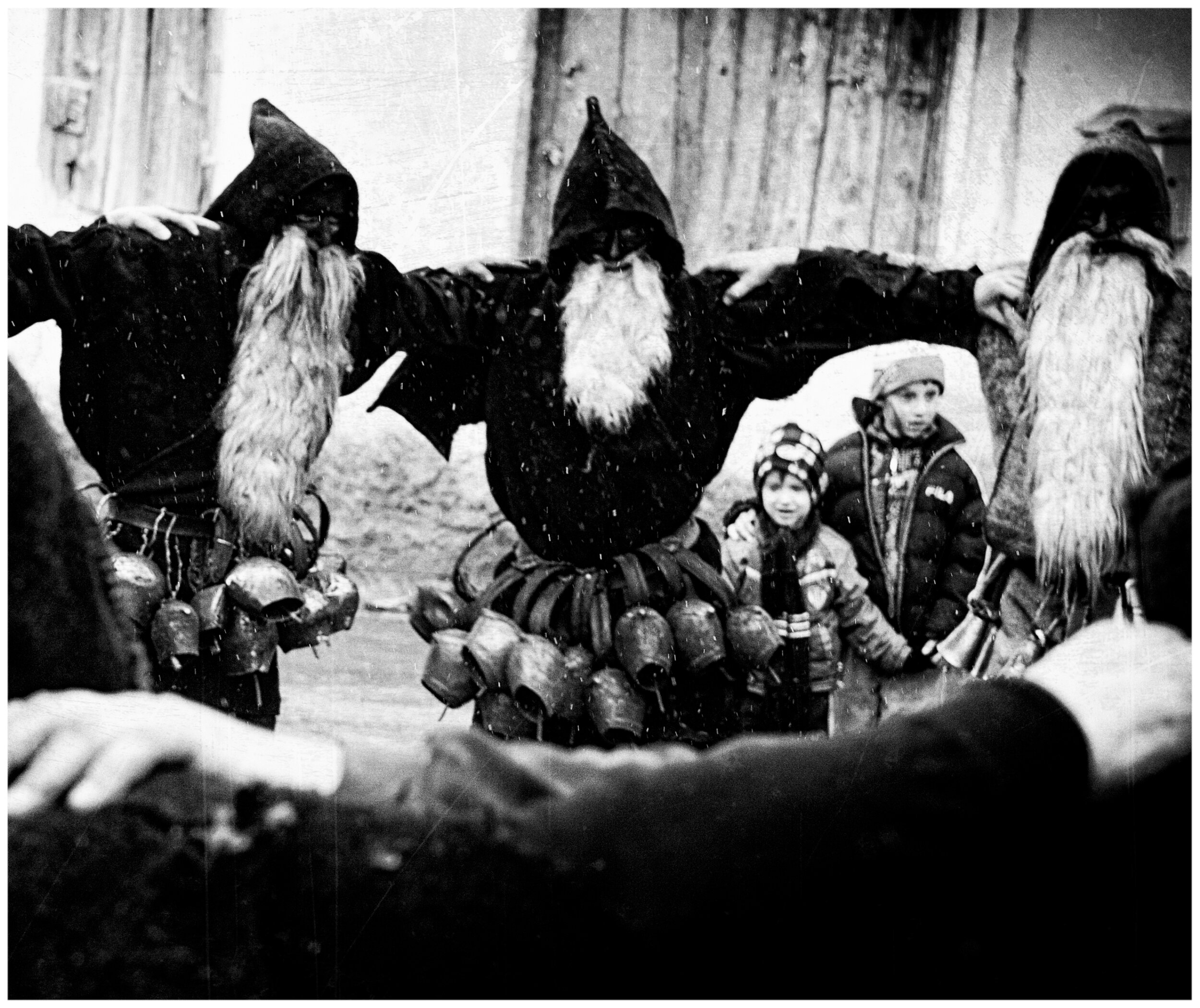Dzolomari | Photo Book
Dzolomari is a long-surviving pagan ritual in the village of Begniste, in the Republic of Macedonia (Southeastern Europe). The tradition’s history stretches back to the fourteenth-century invasion of Macedonia by the Ottoman Turks. The Dzolomari is a masked group of performers who chase the evil spirits from their village. Their battle with an unknown, unseen enemy is a time filled with magical and satirical elements. The name of the village, Begniste, comes from the word “bega” or “beganja” which means “to escape”. Its people trace their ancestors to the village of Azot, located in the middle of the Republic of Macedonia. When these ancestors fled the Turkish army, they settled in the Tikves region of Macedonia. Their new home eventually became the village of Begniste. The Dzolomari ritual happens in the depths of winter, from January 7th-19th, when the people believe their village is invaded by evil spirits, sicknesses, witches, and demons.
Every year, on January 14th, a group of men gathers to become the Dzolomari. They begin by preparing in their homes, painting their faces with dead coals from the fire. Next, they put on a hooded black or brown garment called a “chulavka” made from wool woven on a traditional loom. They also wear wool beards and mustaches, rough-hewn, heavy masks. Lastly, they drape ten or more heavy bells from belts around their waists. Dzolomari gathers in the evening in the middle of the village. Driven by adrenaline and energy, they jump and stamp their feet. They whack their wooden canes against the ground and knock the heavy bells around their waists together. The men dance aggressively, making lots of noise to chase away the evil spirits and keep them from the village for the entirety of the year. The Dzolomari also clang their bells, slap their canes, and stomp their feet to wake the people from their winter slumber.
Their intense, twenty-four-hour, improvised performance includes two figures dressed in white like brides. The brides symbolize the coming year. Villagers who are not a part of the masked group try to steal the brides from the Dzolomari, who defend the brides by hitting the villagers. If the villagers succeed, they mimic or pantomime sexual acts with the brides. This ritualized performance symbolizes fertility and good harvests in the coming year. From dawn until late morning, the Dzolomari enter every house in the village and chase away the evil spirits. In return, the villagers make offerings that the Dzolomari gather and then load onto a donkey. The weight of the gifts on the donkey represents their prayers for a good harvest in the coming year. The people believe that the greater the weight of the gifts, the more fruitful their crops will be. Every year, the people of Begniste reenact this centuries-old battle against an unknown enemy. Throughout their whole lives, the villagers relive this tradition many times. Those who witness Dzolomari are always moved by the performance. They are forever changed. Welcome to the village of Begniste. The date is January 14th. The Dzolomari has begun. Co-owners - Ceci Temkova Ilova & Goce Davidov
The sound of the ritual






